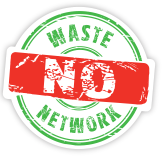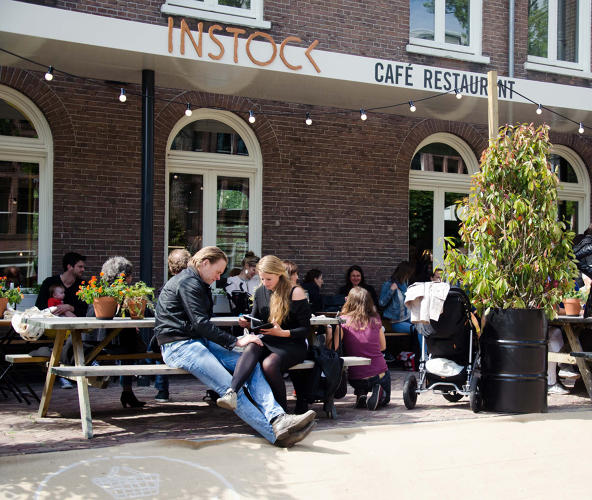10-11-2015 | Most food that ends up in the trash doesn’t actually belong there. A Dutch restaurant called InStock will prove it to you.
While working at a supermarket in Amsterdam, four coworkers became obsessed with finding more solutions to a universal challenge at grocery stores—how to cut down on wasted food.
Compared to consumers, farmers, and restaurants, supermarkets throw out a smaller percentage of total food waste, but it’s a massive amount. In the U.S., for example, where retailers are responsible for about 10% of food waste, that equals over 40 billion pounds of trash every year.
Convinced that something needed to change, the team in Amsterdam partnered with their store and launched a new restaurant called InStock that makes lunch and dinner from whatever edible food happens to be pulled off store shelves that day.
“We were confronted with food waste that was still perfectly edible but not good enough for sale,” says Freke van Nimwegen, one of the co-founders of InStock. “With the knowledge that we have to feed 9 billion people in 2050, we need to change our way of handling food.”
Some produce ends up in dumpsters because displays are overstocked or it isn’t pretty enough; other food gets pulled off shelves early because boxes are damaged or sell-by dates are confusing.
The chain in Amsterdam, called Albert Heijn, is working to cut waste in several ways—they launched a new section of “imperfect” produce in 2014, and partnered with an app to offer deals on food just before it expires. Still, there’s a steady flow of wasted food, and the new restaurant (along with the project’s food truck, and a small shop that sells takeout dinners) can help make use of what doesn’t go to local food banks.
The chefs at the restaurant never know exactly what they’re going to get. “We get a lot of potatoes, fruit, vegetables and bread,” says van Nimwegen. “Our chefs are really creative in making something of the ‘harvest of the day,’ which is different each time.” Each ingredient usually gets several different preparations—cauliflower might turn into grated couscous, cauliflower puree, steamed cauliflower, and crispy roasted cauliflower.
The grocery store supplies fruit, vegetables and bread, while meat comes from one of the grocery store’s suppliers—when it rains in the summer, for example, they might end up with a surplus of steak or ground beef because people are buying less for barbecues. A local fish shop saves cuttings for the restaurant, and a neighboring chocolate shop provides samples. Heineken supplies surplus beer. The supermarket’s distribution center provides damaged goods.
As they cook, the project also wants to help vendors find ways to reduce waste earlier. “We always ask the question whether the supermarket could have avoided the ‘surplus’ of the produce they send to us,” says van Nimwegen. “Most large supermarkets have a very good ordering system, but they do not want to have empty shelves (and neither do most customers). So it’s often a question of availability versus waste.”
It’s a system that the founders think could easily work elsewhere, and they’re looking for locations in new cities now.
Source: fastcoexist.com

